The Story of Snow Leopard – Part One: The Aircraft and the Operation
6 August 2013 10 Comments
Snow Leopard: a moderately large cat native to the mountain ranges of Central Asia, mainly in the Pamir Mountains of Tajikistan (photograph by Steve Winter)
Part One: The Aircraft and the Operation
The Aircraft
This is the story about an aircraft named Snow Leopard, which was a Boeing 747SP that was leased by Tajik Air, the national airline of the Republic of Tajikistan, then a newly independent former Soviet Republic located in Central Asia. The aircraft was operated exclusively on the international routes of Tajik Air and gave that airline a presence in London, UK, Delhi, India and Karachi, Pakistan. The operation was controlled and managed by a management company in London, Tajik Air Limited. This is what made this operation unique. What also made it unique was that Snow Leopard was crewed by former pilots and flight attendants of Pan American World Airways, the former great airline that ceased operations in December, 1991.
The operation started with Snow Leopard’s departure from London for Dushanbe, Tajikistan in December 1993. It ended in February 1994 when the aircraft was repossessed by United Airlines, the aircraft’s owner and lessor. What happened during these three months are stories of adventure, bravery, comedy, intrigue, loyalty and teamwork. And they will be told in the following posts by those who were there, the pilots, flight attendants and the London management staff.
As background, the Boeing 747SP is a modified version of the Boeing 747 which was designed for ultra-long-range flights. The “SP” stands for “Special Performance”. Compared with its predecessor, the 747-100, the 747SP retains its wide-body four-engine layout, along with its double-deck design, but has a shortened fuselage, larger vertical stabilizer, and simplified trailing edge flaps. The weight saved by the shortened fuselage permits longer range and increased speed relative to other 747 configurations.
Known during development as the short-body 747SB, the 747SP was designed to meet a 1973 joint request from Pan Am and Iran Air, who were looking for a high-capacity airliner with sufficient range to cover Pan Am’s New York–Middle Eastern routes and Iran Air’s planned Tehran–New York route. The aircraft also was intended to provide Boeing with a mid-size wide-body airliner to compete with the DC-10 and L-1011.
The 747SP first entered service with Pan Am in 1976. The aircraft was later acquired by VIP and government customers, but sales did not meet the expected 200 units, and production ultimately totaled 45 aircraft.
While in service, the 747SP set several aeronautical performance records, including three record-setting round-the-world flights, two operated by Pan Am and the third by United.
From Captain Sherman Carr, one of the former Pan Am pilots who flew Snow Leopard:
“The airplane that was to be used for this operation was a Boeing 747SP. * * * The plane was originally developed for Pan Am to be able to operate non-stop from the U.S. to Hong Kong and be able to stay aloft for over 15 hours. It was actually a regular 747 with upstairs lounge seating but shortened by about 48 feet to make it lighter and additional fuel tanks for longer range. If it’s not loaded with full fuel for extended range flights, the aircraft actually scoots like a hot rod and will outperform any WWII or Korean conflict fighter aircraft and is a lot of fun to fly. It will roll or loop or do most of the maneuvers you see at airshows but of course this is not authorized so no pilot would ever tell you he had done those things. For Dushanbe, surrounded by mountains in all directions, it was the perfect choice due to its ability to climb quickly, safely and be on its way in a timely manner and still carry about 260 people with an extended first class.”
Snow Leopard, Manufacturer’s Serial Number 21649, Serial 373 was first delivered to Pan American World Airways on May 11, 1979 registered as N540PA and named Clipper White Falcon. It was renamed Clipper Flying Arrow on August 1, 1979 and later renamed Clipper Star of the Union on January 1, 1980. One year later, on January 1, 1981, the aircraft became China Clipper.
On February 12, 1986, as part of Pan Am’s sale of its Pacific Routes, N540PA was acquired by United Airlines. The registration was changed to N149UA on June 1, 1986. It was under this registration that the aircraft operated for Tajik Air, pictured below:
After the aircraft was repossessed by United Airlines, it was bought by the Brunei Government and re-registered as V8-JBB. It was then bought by the Government of Bahrain on December 24, 1998 and registered as A9C-HMH (below, left). Today Snow Leopard is owned by the Las Vegas Sands Corporation, registered as VQ-BMS (below, right, photo by Wong Chi Lam). She is still in operation.
The Operation
Starting a new service in any market requires a great deal of research and planning. There must be a suitable aircraft. Government approvals must be in place. Airport access, slots (if required), ground handling services and airport facilities (check-in desks, etc) must be obtained. On the commercial side, the new service needs to be marketed, publicized and tickets sold. Other details include setting up the ticket and operations offices, arranging catering, publishing an In-Flight magazine and printing safety information cards, timetables, paper tickets, baggage tickets, promotional materials and stationary.
For Tajik Air, however, there was one very important requirement missing: an operating base in London and sufficient infrastructure to crew and maintain a Boeing 747SP aircraft. That presented a huge problem as the civil aviation structure of Tajkistan was completely inexperienced in intercontinental operations. In fact, Tajik Air was created by the breaking-up of the Soviet Union and the then national carrier Aeroflot’s leaving of some old Russian-built aircraft (mostly TU-154s) for use by Tajik Air as the new national air carrier of Tajikistan. Setting up a London base would seem impossible to achieve given the limited resources of Tajikistan. However, through the foresight and creativeness of a few airline experts in London, the requirement was met.
To establish the necessary infrastructure so that Tajik Air could operate flights to/from London, a third-party UK management company, Tajik Air Limited, was formed. Its purpose was to operate international flights on behalf of Tajik Air. The company would obtain and maintain the aircraft and crew, organize the marketing and selling of the flights and essentially operate the flights. This would be accomplished using Tajikistan’s Air Operator’s Certificate and Tajik Air’s call-sign and airline code. Tajikistan committed to funding the new service and also obtaining the required government permissions for the operation.
How would this operation be viable and profitable? The route of primary interest to Tajik Air was the London (Heathrow) (“LHR”)-Dushanbe (“DYU”) sector. Operating that sector as an Origin-Destination route presented problems in that there was little, if any, traffic between the two points. The question was how to fill an aircraft with 260 seats? The answer: Offer service between LHR and points beyond DYU. This was to be accomplished using rights under the Sixth Freedom of the Air.
The Freedoms of the Air, established by the Chicago Conference of 1944, are a set of commercial aviation rights granting a country’s airlines the privilege of entering and landing in another country’s airspace. The table below illustrates these Freedoms of the Air:
In the case of Tajik Air, the Third and Fourth Freedoms were the operative. The former gives the “Home” (Tajikistan) country the rights to carry commercial traffic (passengers/cargo/mail, etc) to another country; the latter gives the “Home” country the rights to carry commercial traffic from that other country to home. These rights are generally agreed-to between the “Home” country and the other country in the form of a Bilateral Agreement or an Air Services Agreement. By using Third and Fourth Freedom rights, a Sixth Freedom operation can be created. It is similar to a hub operation with the home country being in the middle of the operation between two different countries.
For Tajik Air, the beyond points selected were Delhi, India (“DEL”) and Karachi, Pakistan (“KHI”) due to the large number of Indians and Pakistanis living in the UK. The schedule would work like this: Tajik Air departs from LHR with a planeload of passengers on a Fourth Freedom flight to DYU. Upon arrival in DYU, those few passengers destined for DYU disembark and the rest stay on board. The flight then departs DYU with a new flight number on a Third Freedom flight for DEL or KHI. Upon turning around in DEL/KHI, with a new planeload of passengers, the flight becomes a Fourth Freedom to DYU and from DYU, with another flight number, Third Freedom to LHR. By operating this schedule, Tajik Air could fill the seats of Snow Leopard, and compete in a highly competitive market by offering good service with low fares. In order to operate this schedule, Bilateral or Air Services agreements were required for scheduled traffic between Tajikistan and India/Pakistan in addition to the UK.
The published timetable shown below illustrates this operation. Baggage tags are also shown.
As outlined above, there were other details necessary for the operation. For the aircraft, copies of the In-Flight magazine and emergency information cards were printed and are illustrated below:
Additionally, as part of the pre-launch publicity, an article was put in a magazine for business travelers about the new service:
For ticket sales, an office was set up in Kensington, London and a general sales agent was appointed in Karachi and Delhi. In addition a large poster was printed for display at the ticketing offices with an image of Snow Leopard in the air:
The next steps in the launch of Tajik Air’s new service to London involved recruiting and training flight crews and taking delivery of the aircraft. This will be coming in Part Two of the Story of Snow Leopard.
End of Part One

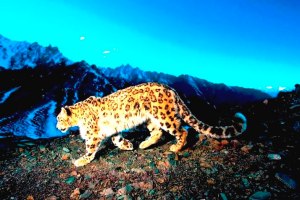

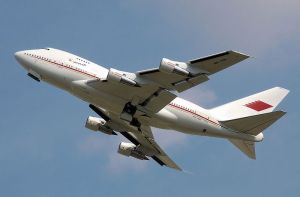

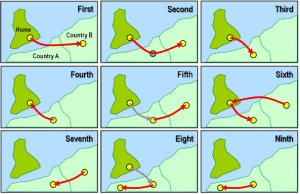




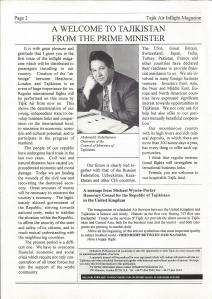

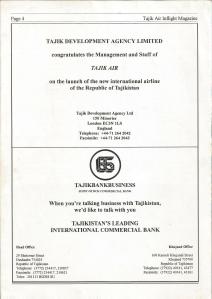
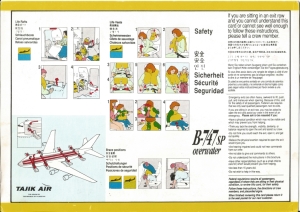

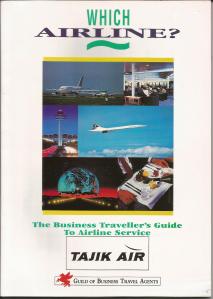


Very interesting. Look forward to part 2.
So do I.
Was the essentially political availability to Tajikistan itself of slot allocations in London as well as the two popular London destinations the reason why the airline was expected to be profitable?
The London management company had some good political connections that eased their ability to get slots, although the flight departures and arrivals were during non-peak times. The two beyond points were designed to capitalize on the large Indian/Pakistani market in London and certainly the operation was expected to be profitable.
I was lucky to get a copy of their inflight magazine.. wonder if it’s worth anything theses days
Thanks for the message. Unfortunately, I do not know what the value might be, at least for now. You could google it and see if it is for sale on sites such as eBay, etc. Good luck. I do have quite a bit of memorabilia…
Best regards.
Hi there,
I have a question. My father is in one of the pictures.
Earl Speirs. Was he a part of this?? He flew for Panama Am.
Hello Tara, thank you for your inquiry. There were a number of former Pan Am pilots in the operation; in fact, all the pilots were Pan Amers. I am in touch with both former PA pilots and FA’s and can confirm your question. However, needless to say, if he was pictured, he most certainly was part of the operation. Can you tell me what picture you are referring to? I have put the story into a small book. If you like I can sell you a copy. It has been updated from what was originally posted on the website. It is a fascinating story. Thanks and best regards, James P (Jamie) Baldwin
Hi there,
I have a question. My father is in one of the pictures.
Earl Speirs. Was he a part of this?? He flew for Pan Am.
Hi James,
Thanks for the reply. I would appreciate it if you could confirm. He is in the picture outside in the snow page 48 I believe. There are 3 men in front of what I believe is the US Embassy. He is the one on the left, in the story it says he is on the right. I am having him read it now but his memory is not that great and he is having a hard time remembering it. Thanks again and let me know how I can get a copy.
Tara
Hello Tara, do you mind switching to email? My email address is jpbpa2@gmail.com. I’ll circulate the picture to Clipper Pioneers and any ex-Panamers who I know were in the operation. Also, I’ll fix the caption of the picture putting your Dad’s name on the left.
I can sell you a copy of the book directly for $10 including First Class postage. The book is also available on Amazon. If you are Prime, you will receive it by 5 January with free shipping. The price is $8.70 and it will be shipped directly by Amazon. Here is the link: https://www.amazon.com/dp/1091154694. However, might I suggest waiting until I fix the picture caption? It will take a bit longer to receive the book, but well worth it. I’ll also see about making the picture larger. I can let you know when the revised version is available. Should be some time next week.
Tell your Dad that I knew the late Sherman Carr (who is in the same picture, center), Ed Olasz, and others whose names escape me (I’ll check with Clipper Pioneers), and the Pursers I am in current contact through Facebook are Tania Anderson, Gunilla Crawford, and Vince Rossi. I hope that I can confirm.
Best regards,
Jamie